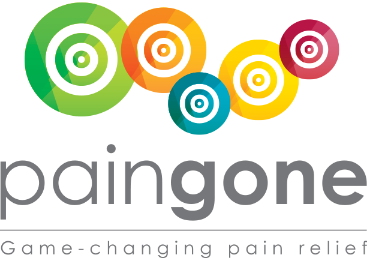
Aug 19, 2021
Paingone
Skills Classes Improve Pain Treatment Outcomes After One Session
The NIH’s and National Center for Complementary and Integrative Health’s recent study reveals that for many patients, a two-hour class focusing on pain management techniques is as beneficial as eight cognitive-behavioral therapy (CBT) sessions in patients suffering from low back pain. The study indicates that patients may receive impressive pain relief after just one class focusing on pain management skills; participants felt pain relief on par with individuals who have gone through two months of weekly CBT.
“CBT delivered in groups can offer important elements like contact with a therapist and peer support,” said Helene Langevin, M.D., director of NCCIH. “But we realize that 16 hours of treatment time and the associated costs could be out of reach for some patients, so this research could expand treatment options and make nonsurgical and nonpharmaceutical pain management accessible to more patients.”
The individual sessions, referred to as Empowered Relief Intervention, offered pain education, self-regulating through relaxation, self-soothing, and cognitive reframing. For patients with limited resources and time, a single session is as effective as weeks of CBT without the attached costs. The Empowered Relief sessions also gave patients an increased sense of control over their pain relief.
Fibromyalgia Pain Responds to Gout Medication
Fibromyalgia’s widespread body pain is known to be one of the most challenging forms of chronic pain to treat successfully. In a study entitled, “Effects of Allopurinol on Pain and Anxiety in Fibromyalgia Patients: A Pilot Study,” treatment with allopurinol showed promise. A month of treatment with the medication, usually used to treat high uric acid levels and resulting gout significantly reduced pain in women with Fibromyalgia, including women who hadn’t responded well to more conventional treatments.
Allopurinol is a purine derivative. Purines are molecules found in RNA and DNA. They regulate nervous system signal transmission and the pain perception process. Allopurinol blocks uric acid production in the body, which in turn reduces purine breakdown. This resulted in less perceived pain.
The study targeted both pain and anxiety, with results studied 15 and 30 days after beginning treatment with allopurinol. Results indicated that test subjects saw significant improvement at both 15 and 30 days regarding pain. Anxiety was also reduced in a majority of the patients, minimizing the often vicious cycle of pain and anxiety that feed each other.
The study was small in scale, but the promising results mean more studies are needed. The study suggests an efficacious dose for pain relief may be 300 mg of allopurinol taken twice a day.
Patients Prefer Less Invasive Peripheral Nerve Stimulation for Chronic Pain
The traditional method of treating chronic peripheral nerve pain includes nerve blocks and radiofrequency ablation (RFA) before considering other options such as Peripheral Nerve Stimulation (PNS).
A recent study using temporary percutaneous PNS treatments indicates that nerve blocks and RFA were not the first choices for most patients when the less invasive, temporary PNS was available. When asked what type of treatment they preferred for back pain, most chose nerve stimulation over ablation. Most patients had already exhausted the effectiveness of nerve blocks by this time.
The team of researchers included a medical ethicist, medical researchers, and interventional pain management specialists. The study focused on which option patients preferred and how their choices were impacted by how informed individual patients were about the potential side effects of the treatments.
When adverse outcomes such as denervation with RFA and broken implants for temporary PNS were outlined in detail and discussed, patients were even more likely to choose Peripheral Nerve Stimulation over radiofrequency ablation. A primary reason given was that temporary PNS was less invasive and required less recovery time. The potential severity of side effects from radiofrequency ablation was also a concern for chronic pain patients.
What Pain Specialists Can Learn from the Study:
Physicians working with individuals with chronic pain should consider the study results in mind, including how best to communicate with their patients. For pain patients to choose what works best for them, doctors need to communicate fully and clearly, including:
- Describing each option clearly and allowing patients to ask questions.
- Clarity and accuracy are crucial to patient understanding.
- Clearly outline the positive outcomes expected as well as any potential adverse reactions.
- Make it clear with all options what the success rate is.
Billionaire Mark Cuban Works to Bring Affordable Prescriptions to Market

The Mark Cuban Cost Plus Drug Company, based in Texas, is bent on making sure Americans can get the medications they need at affordable prices. The first drug to roll off the line was Albendazole, used to treat hookworm infections. Buying directly from the manufacturer rather than through a supplier, Cost Plus was able to bring the cost down from $225 per pill to $20 per pill. The current plan will bring almost 100 more drugs into the Cost Plus Drug fold and pass the savings on to consumers.
Rather than using the various sales reps and middlemen to obtain medications, The Mark Cuban Cost Plus Drug Company purchases directly from pharmaceutical companies. It sells them to consumers at just above cost. The company also has plans for its own manufacturing facility by sometime in 2022.
In 2019, a Kaiser Family Foundation survey revealed that three in ten adults did not taking their medications as scheduled because they could not afford them. Not taking enough prescription medication or taking it improperly can lead to serious side effects or make the medicine ineffective. For patients suffering from chronic pain, not taking their medication regularly can lead to debilitating pain. Companies like Cost Plus Drug Company hope to change the trend in the future.
This Week’s Pain Fact: According to the National Institutes of Health, the cost of chronic pain exceeds the cost of the next six most costly diagnoses, surpassing the combined economic impact of cardiovascular disease, injury and poisoning, endocrine and metabolic disorders, GI diseases, and respiratory diseases.
Is Paingone helping your patients and your practice?
Tell us your success story.
A robust retail strategy is essential to growing your practice.
You only have so many hours a week available for appointments. The fastest way to increase your bottom line is to incorporate profitable products that generate repeat business and build your reputation as a medical professional. That’s where Paingone comes in.
Contact us below to learn more about our products, wholesale pricing and how Paingone can benefit your practice.

